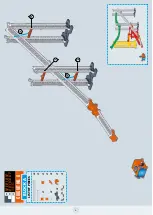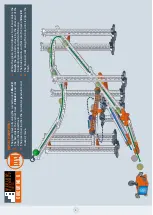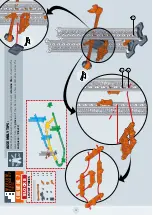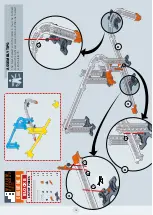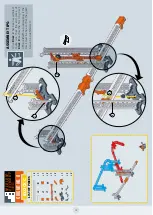
THE GOLDEN RULE
GETTING STARTED: SYMBOLS AND COLOURS
To work comfortably and assemble the circuits more easily, find a
stable and clean surface free of objects
,
for example a table or a part of your room that has a smooth and even floor surface. It is important to find a
smooth surface to
improve the stability of the routes
and ensure
proper adhesion of the feet
, which you
can place under the bases, if you wish.
Action & Reaction is a kit for making experiments. As you gradually assemble the routes and make the balls
move through them, you will notice that a successful outcome
depends on very slight variations in corners
and distances
. The kit’s components are specially designed so that, once assembled, they can be
adjusted
,
tested and then readjusted
, allowing you to complete the route successfully only after several attempts.
So,
don’t be afraid to experiment
! You can freely change the track attachment points, adjust the inclination
of the pieces as you wish, switch one ball with another... and you will see how the most insignificant details
can trigger the most amazing effects! This is the aim of Action & Reaction: to teach you to create your own
chain reactions!
ASSEMBLY TIPS
To assemble the circuits correctly, first observe the
overview of the completed circuit
with the list of
all
the pieces
.
Next, the circuit has been divided into blocks of different colours, which are highlighted in the small boxes
on each page.
For each block you will find the assembly specifications indicating:
the
list of pieces
used to assemble the respective block
the
position of the holes
where the elements will be slotted.
The dotted circles with the numbers inside indicate the assembly
hole, starting from the beginning or end of each single piece
symbols
start
: indicates which ball to push in order to activate the route.
balance
: when the elements are not slotted together but are either resting on others or capable
of tilting.
At the end you will once again find the complete circuit with the following information:
the description of the
operating steps
the graphic
simulation
of the route taken by the balls, of the moving elements and the arrows indicating,
respectively, the
route’s direction
(
/
) and the
change of status (
)
.
1
4






